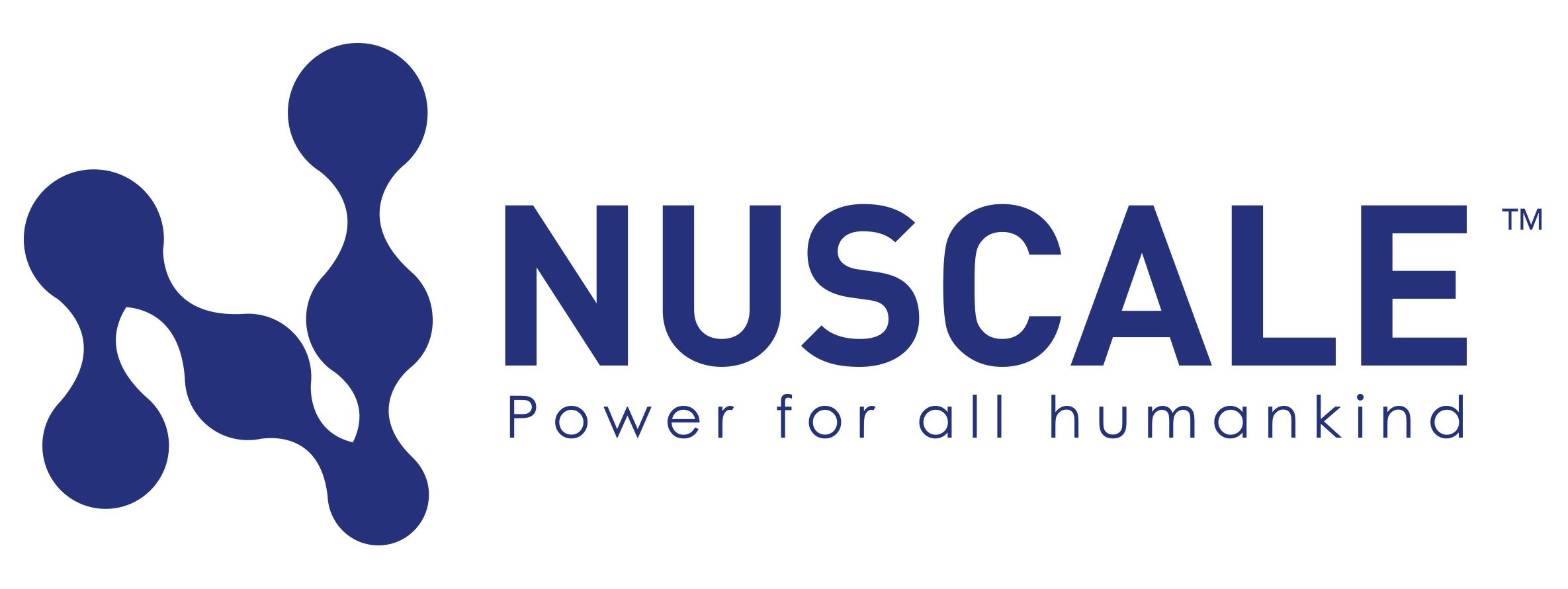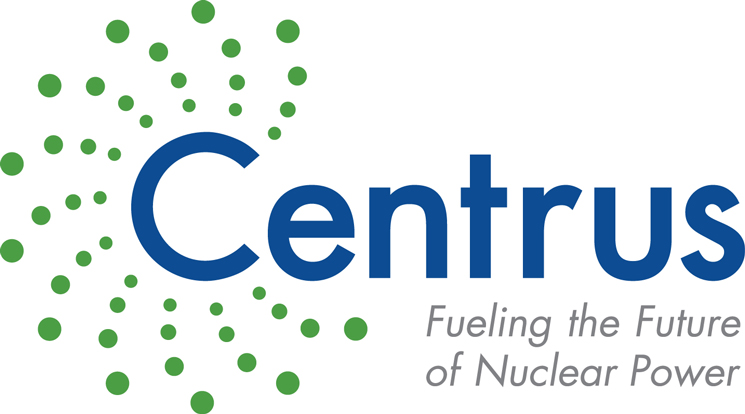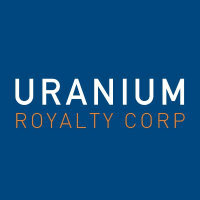Nuclear energy is making a bold comeback in 2025. As artificial intelligence, data centers, and industrial electrification place unprecedented demands on the U.S. power grid, the role of reliable, zero-carbon nuclear energy is clearer than ever.
Federal policy, energy security priorities, and technological innovation have created a wave of opportunity for investors looking at nuclear power stocks.
In this article, we break down the 11 best nuclear power stocks to watch in 2025. Whether you’re seeking stable utilities, uranium suppliers, or early-stage disruptors, we’ve got you covered.
TL;DR: Nuclear Power Stocks That You Can’t Miss
- Constellation Energy (CEG): Leading U.S. nuclear operator.
- BWX Technologies (BWXT): Key nuclear component provider to the government.
- Vistra Corp. (VST): Utility operator with nuclear base-load capacity.
- Southern Company (SO): Utility firm with new Vogtle reactor.
- Exelon Corporation (EXC): Major nuclear plant operator.
- NuScale Power (SMR): SMR pioneer with NRC-approved design.
- Cameco Corporation (CCJ): Top uranium miner globally.
- Oklo Inc. (OKLO): Microreactor start‑up targeting off‑grid needs.
- Centrus Energy (LEU): U.S. HALEU fuel supplier for SMRs.
- Uranium Royalty Corp. (UROY): Royalty‑based uranium exposure.
- Denison Mines (DNN): Uranium explorer with ISR potential.
Best Nuclear Power Stocks To Buy
Constellation Energy (NASDAQ: CEG)
Overview
Constellation Energy leads the U.S. nuclear power sector with the largest fleet of nuclear reactors in the country.

With over 19 gigawatts of nuclear capacity and long-term purchase agreements with tech firms like Microsoft and Meta, it’s emerged as a key player in America’s transition to clean energy.
Growth Catalysts
The push toward decarbonization continues to elevate the profile of nuclear energy, and Constellation is capitalizing on this trend.
The company is actively pursuing the reactivation of dormant plants, including efforts surrounding the Three Mile Island facility.
Its stable revenue from long-term contracts provides insulation against energy market volatility, and its engagement in hydrogen and storage projects further supports its clean energy leadership.
Demand from AI-driven data centers also bolsters the value of reliable nuclear base-load power.
Risks
Despite its strengths, Constellation operates in a heavily regulated space, and any shifts in nuclear policy or safety concerns could have an impact.
The re-licensing and restart of old reactors involves political and technical complexities.
Additionally, while its revenue base is relatively secure, any prolonged drop in electricity demand or market disruption could slow expansion plans.
Conclusion
For investors looking for dependable exposure to U.S. nuclear power, Constellation stands at the forefront.
Its scale, clean energy commitments, and strategic partnerships make it one of the most future-ready companies in the nuclear sector.
BWX Technologies (NYSE: BWXT)
Overview
BWX Technologies sits at a rare intersection of nuclear energy, national defense, and advanced innovation.
This Virginia-based company manufactures nuclear components for the U.S. Navy’s submarines and aircraft carriers and produces nuclear fuel and key medical isotopes.

Growth Catalysts
In 2025, BWXT is reaping the rewards of long-term investment in strategic federal partnerships.
The company is a core contractor in NASA’s nuclear power initiative for lunar habitats, as well as DARPA’s DRACO project, which explores nuclear propulsion for space travel.
These high-profile efforts are backed by multi-year funding and place BWXT at the heart of defense-related innovation.
Closer to home, its advanced nuclear manufacturing facilities are ramping up production of medical isotopes like molybdenum-99, used in cancer diagnostics and treatment.
This segment offers a strong margin profile and growing demand, especially with global supply tightening.
Meanwhile, BWXT’s nuclear fuel production supports not just Navy operations but the early-stage rollout of advanced microreactors and small modular reactors (SMRs) under DOE-funded programs.
Risks
While the company benefits from stable government contracts, its fortunes are tied closely to federal budget cycles.
A shift in priorities could delay or defund key projects. BWXT also faces technological and supply chain risks due to the precision and complexity of its components.
Any missteps in delivery timelines could erode client trust and future opportunities.
Conclusion
With exposure to cutting-edge nuclear applications and critical national infrastructure, BWXT offers investors a differentiated path to nuclear growth.
It’s a high-conviction choice for those who want access to both energy innovation and defense-backed stability.
Vistra Corp. (NYSE: VST)
Overview
Vistra has emerged as one of the most adaptable energy providers in the United States.
Headquartered in Texas, it operates one of the largest competitive power portfolios in the country, including natural gas, solar, battery storage, and nuclear generation.

As demand for uninterrupted power grows, particularly from AI-driven data centers and a surging population in southern states, Vistra is positioning itself to meet these needs.
Growth Catalysts
The transformation of the energy grid is opening doors for companies that can deliver consistent, base-load power.
Vistra’s nuclear asset at Comanche Peak gives it a unique edge as more regions seek to stabilize intermittent renewable supply.
The company is also ramping up investments in grid-scale batteries and solar projects, aiming for a diverse yet integrated clean energy portfolio.
Its 2024 acquisition of Energy Harbor’s nuclear assets marked a major leap in expanding its nuclear footprint, making it one of the largest nuclear operators in the U.S. market.
Equally important is Vistra’s growing customer base across deregulated energy markets, where flexibility in pricing and innovation in retail offerings can generate steady cash flows.
Its efforts to electrify transportation infrastructure and build virtual power plants further bolster its growth prospects.
Risks
Vistra’s biggest challenges stem from its exposure to wholesale electricity pricing volatility, particularly in competitive markets like Texas’s ERCOT.
Any grid instability or extreme weather events could strain operations and trigger pricing shocks that Vistra may not be prepared for.
Additionally, nuclear units require periodic upgrades and regulatory oversight, which can add to operational complexity. Its expansion strategy also raises integration risks with newly acquired assets.
Conclusion
With a solid combination of dependable nuclear generation and forward-looking clean energy projects, Vistra stands out as a future-ready power provider.
It’s a compelling pick for investors seeking a blend of traditional reliability and innovative energy solutions in one portfolio.
Southern Company (NYSE: SO)
Overview
For decades, Southern Company has served as a backbone utility provider in the southeastern U.S., offering electric and natural gas services to over 9 million customers.

The company brought its Vogtle Units 3 and 4 online in recent years, marking the first new nuclear reactor additions to the U.S. grid in over 30 years.
This historic milestone elevates Southern from a traditional utility into a frontline innovator in carbon-free baseload energy.
Growth Catalysts
Southern’s successful commissioning of Vogtle Unit 4 is a validation of years of strategic investment and regulatory navigation.
With both Vogtle units operational, they are expected to power over 1 million homes while emitting zero carbon, a significant long-term asset amid rising climate concerns.
Furthermore, as demand for round-the-clock power accelerates due to AI, electric vehicles, and data centers, nuclear’s reliability gives Southern a competitive advantage.
Its robust dividend, investment-grade credit rating, and regulated status enhance its appeal to income-seeking investors.
Participation in federally backed nuclear research and innovation projects, including small modular reactor feasibility studies, further positions Southern for future-proof growth.
In 2025, the company also benefits from generous tax incentives under the Inflation Reduction Act, boosting returns on clean energy investments.
Risks
Despite its achievements, the cost and timeline overruns tied to Vogtle have drawn criticism.
Billions in additional expenses and years of delays created investor skepticism that still lingers.
Regulatory scrutiny remains high, especially as Southern pushes rate hikes to recover its massive investments.
If public or political sentiment shifts away from nuclear, or if Unit 4 faces additional challenges, confidence could erode quickly.
Conclusion
Southern Company has done what many believed was impossible: deliver a new nuclear reactor to the U.S. grid.
That accomplishment, along with its long-standing utility foundation, makes it a unique hybrid of innovation and reliability.
While past hiccups can’t be ignored, its future in nuclear looks stronger than ever.
Exelon Corporation (NASDAQ: EXC)
Overview
Exelon remains a cornerstone of America’s utility sector, providing electric and gas services through its network of regulated utilities across multiple states.
Although it divested its power generation arm into Constellation Energy in 2022, the company’s legacy and infrastructure continue to support the nuclear industry in meaningful ways.

Growth Catalysts
A major tailwind for Exelon is the U.S. government’s increasing support for decarbonization.
Its infrastructure investments are aligned with federal and state efforts to modernize the electrical grid, which is essential for expanding nuclear and renewable integration.
In addition, Exelon’s multibillion-dollar investments in grid resilience, smart metering, and clean electrification support an environment where nuclear power can operate more efficiently and reliably.
The company’s partnerships and technical footprint still make it a key facilitator of nuclear energy delivery.
Moreover, its footprint in major metropolitan markets like Chicago, Philadelphia, and Baltimore offers both demand stability and long-term customer relationships.
These urban centers require robust grid support—an area where Exelon continues to invest heavily.
Risks
One challenge is that Exelon no longer directly operates nuclear generation facilities.
Investors specifically looking for nuclear production exposure may find this limits its relevance.
Also, the company operates in politically sensitive and highly regulated regions, which means that earnings are often tied to rate cases and public utility commissions.
Changes in local legislation or delays in grid projects could hamper progress or returns.
Conclusion
For investors seeking indirect exposure to the nuclear ecosystem, Exelon remains a reliable, low-volatility choice.
It plays a foundational role in enabling nuclear and renewable energy to reach consumers through its robust grid infrastructure.
While it doesn’t generate nuclear power anymore, it continues to be a critical piece of the clean energy puzzle.
Top Nuclear Power Stocks Right Now
NuScale Power (NYSE: SMR)
Overview
NuScale Power charts a bold path in nuclear space.

Rather than a gigantic reactor, NuScale’s model involves compact units built in factories, shipped to the site, and assembled modularly.
This approach promises faster deployment, lower upfront risk, and flexible scaling of nuclear generation capacity.
Its recent progress toward commercial use marks a milestone, not just for NuScale but for the potential resurgence of nuclear power delivery.
Growth Catalysts
Factory-built SMRs change the nuclear game.
With high upfront costs and extended timelines daunting investors for decades, NuScale sidesteps those issues by prefabricating reactor modules.
Several utilities, including Utah Associated Municipal Power Systems, are in advanced talks to build NuScale SMRs for stable, carbon-free baseload power.
On top of that, ongoing support from the Department of Energy (DOE) via funding and pilot projects is accelerating its route to reality.
This is especially timely as states tighten emissions rules, and renewables alone struggle to meet grid reliability, making agile nuclear such as SMRs, more appealing.
Risks
As promising as SMRs sound, they remain largely unproven commercially.
NuScale must navigate regulatory requirements, secure construction and insurance financing, and deliver projects without cost overruns.
Delays or unexpected technical setbacks could dent credibility or investor sentiment.
The company also competes with cheaper natural gas and upgrades to renewables plus storage, which continue to evolve rapidly.
Until multiple NuScale units are actively operating, skepticism about scale and profitability will remain a hurdle.
Conclusion
NuScale stands on the frontier of nuclear’s next generation, offering a scaled-down, factory-crafted reactor to power tomorrow’s carbon-free grids.
If it can deliver, SMRs could change energy dynamics, but the path won’t be simple.
For investors seeking breakthrough potential tied to real-world clean energy needs, NuScale remains one of the most compelling long shots in the business.
Cameco Corporation (NYSE: CCJ)
Overview
Brightening the nuclear spotlight from the mining world, Cameco stands out as one of the globe’s top uranium producers, with deep roots in Canada and significant influence in U.S. markets.
Renowned for cost-efficient large-scale operations and strategic holdings, like a 49% stake in Westinghouse Electric, it plays an instrumental role in the expanding uranium supply chain.

Growth Catalysts
The macro backdrop for Cameco is compelling.
With global uranium demand on the rise, spurred by new reactor plans, SMR designs gaining momentum, and a U.S. shift toward domestic supply, the company is well-placed to capitalize.
Indeed, analysts point to a structural supply deficit emerging as production struggles to keep pace.
While spot prices dropped nearly 30%, Cameco’s stock surge, outperforming the commodity itself, signals investor confidence in long-term fundamentals.
Its 49% ownership of Westinghouse adds a layer of upside, as that company is viewed as a potential prime contractor for upcoming U.S. reactor builds, projects backed by recent executive orders aimed at expediting nuclear growth.
With planned increases in production and a focus on domestic and allied energy security, Cameco looks positioned for years of durable demand.
Risks
No company is without challenges. Geopolitical tensions, from Canadian mining regulations to supply chain shifts in Kazakhstan, introduce execution uncertainty.
A January pause in uranium production from Cameco’s Inkai project due to regulatory delays underscores this.
While long-term prices remain stable around $80, utilities’ reluctance to lock in contracts brings near-term uncertainty.
Additionally, macro fluctuations in energy policy or reactor financing could dampen uranium market sentiment.
Conclusion
Cameco delivers a rare combination of scale, strategic partnerships, and thematic alignment with the global push for clean, reliable power.
Its production capabilities and link to reactor infrastructure through Westinghouse make it a standout in the uranium space.
For investors betting on a nuclear rebound, Cameco brings both operational credibility and catalytic exposure.
Centrus Energy (NYSE‑American: LEU)
Overview
Picture this: the U.S. has gone decades without having its own source of HALEU, high-assay low-enriched uranium essential for next-generation reactors.
That’s exactly the void Centrus is filling. From its U.S.-owned enrichment plant in Piketon, Ohio, it’s now the only domestic provider of this advanced fuel.

This achievement rebooted America’s nuclear fuel independence, a moment that feels both historic and strategic.
Growth Catalysts
What’s powering Centrus right now? Several big things:
First, the DOE extended its original HALEU contract through mid-2026, with options for up to eight more years. That means stable, multi-year revenue potential backed by Washington.
Second, in Q2 2025, Centrus crushed expectations — posting nearly 180% upside in earnings per share and 19% higher revenue. Margins jumped too, signaling rising operational strength.
Third, the geopolitical landscape is reinforcing demand. With the U.S. banning Russian-enriched uranium imports, Centrus is stepping in as the secure supplier, and that’s fueling both national interest and investor confidence.
Pull it all together, and Centrus is increasingly vital to both clean energy and energy security — not just for today, but for years ahead.
Risks
Of course, nothing is risk-free. Centrus remains heavily reliant on DOE contracts and federal funding. A shift in policy, budget cuts, or delays could slow progress.
Scaling up enrichment capacity is no simple task either — centrifuge technology is complex, and any technical or regulatory hiccup could stall production or erode margins.
Finally, competition from foreign entities like Urenco exists, though Centrus stands out as the only U.S.-owned and operated HALEU supplier — a clear edge but not a guarantee.
Conclusion
Here’s what really stands out: Centrus is the linchpin in America’s bid to power advanced reactors domestically.
Beyond its unique HALEU capability, its rapidly improving financials and long-term DOE ties make it more than a niche player; it’s a strategic growth story.
Ideal for investors who believe in nuclear innovation and want a play on clean energy with substance (and some government backing).
Oklo Inc. (NYSE: OKLO)
Overview
Imagine a compact nuclear reactor no larger than a shipping container—Oklo’s Aurora powerhouse is designed exactly like that.
Based in Santa Clara, Oklo is pioneering advanced fast neutron microreactors tailored for remote and high-demand settings such as AI data centers, military bases, and off-grid industrial sites.

Even better, the reactor is built to run up to 10 years without refueling.
While they stumbled in their first design submission to the U.S. Nuclear Regulatory Commission (NRC), Oklo is now gearing up to resubmit and aims to bring its first model online at Idaho National Laboratory by 2027.
Growth Catalysts
Oklo finds itself at the heart of both technological and policy momentum.
In August, the U.S. Department of Energy selected Oklo for three reactor pilot projects, granting them a streamlined path toward demo reactor operations by July 4, 2026.
On the military front, the company is advancing a microreactor deployment to power and heat the Eielson Air Force Base in Alaska, under a notice of intent that’s backed by long-term procurement agreements.
To ensure solid funding, Oklo conducted a successful public offering earlier, in June 2025, it raised around $400 million to support its build-own-operate business model.
Its financials are strengthening: as of Q2 2025, Oklo reported a narrower net loss and maintained strong cash reserves, drawing bullish analyst attention and a fresh Outperform rating from Wedbush.
Risks
Even with all the potential, caution is advisable. The company recorded a Q2 loss of about $28 million, missing earnings expectations, though its balance sheet remains robust.
The technological hurdles are significant: finalizing designs, winning approvals, and delivering on a tight 2027 timeline all pose execution risk.
Notably, the NRC rejected their previous submission in 2022, so a renewed application still faces intense scrutiny.
Moreover, Oklo’s unique use of plutonium in its reactor has raised non-proliferation concerns, though the company asserts its methods make weaponization virtually impossible.
Conclusion
Oklo stands out as perhaps the most dynamic nuclear tech firm today, blending innovation with momentum.
Its microreactor designs align perfectly with today’s high-demand, zero-carbon power needs, whether that’s AI infrastructure or remote installations.
If regulation and execution fall into place, the Aurora could prove to be a foundational leap in clean energy.
For investors who lean into speculative, future-defining energy plays, Oklo presents one of the most compelling high-upside stories in the sector.
Best Nuclear Power Penny Stocks
Investors looking for penny stocks in the nuclear sector should take a closer look at companies involved in cutting-edge nuclear technologies.
These companies offer unique opportunities to capitalize on the growing demand for clean and sustainable energy solutions.
Uranium Royalty Corp. (NASDAQ: UROY)
Overview
A truly unique player in the uranium space, Uranium Royalty Corp. is the only publicly traded company solely focused on uranium royalties and streams.

Its model offers a smoother ride through uranium’s natural price swings, making it a clever option for investors seeking exposure to nuclear demand without the rigors of mine operations.
Growth Catalysts
As nuclear sentiment ebbs and flows, Uranium Royalty shines by leaning into long-term contracts rather than production volumes.
In mid-2025, it expanded its footprint with a royalty on Forum Energy Metals’ Aberdeen uranium project, a strategic move into Canadian exploration.
Its flexible royalty approach lets it benefit wherever uranium prices and investor confidence rise.
Additionally, a refreshed leadership team, including a seasoned geoscientist and a board member with global resource investing experience, suggests a company sharpening its strategic edge.
Risks
Royalty-focused models may be lower risk than mining, but they’re not risk-free. This business depends on royalty-generating deals coming to fruition. If exploration falters or permits stall, royalties may not materialize.
Furthermore, Uranium Royalty is subject to uranium price trends, a decline in commodity valuation could limit returns.
And since financial filings are sparse in public distribution, transparency remains something investors should monitor.
Conclusion
For those wanting to play the nuclear uranium story with a lighter operational risk footprint, Uranium Royalty offers a market-unique proposition.
Its earnings may hinge on uranium developments, but it sidesteps many challenges facing traditional miners—making it a subtler, yet still speculative, bet in the uranium space.
Denison Mines Corp. (NYSEAMERICAN: DNN)
Overview
Denison Mines is a well-established uranium exploration and project development company focused on Canada’s fertile Athabasca Basin.
With active interests in the McClean Lake mine and development-stage projects like Wheeler River and Midwest, it blends production with exploration.

Growth Catalysts
This summer has been busy and promising. Denison resumed uranium production at McClean Lake using ORANO’s innovative SABRE method.
It also secured provincial approval to advance the Wheeler River project. These moves reflect not just regulatory progress, but real operational ramp-up.
The Midwest ISR (In Situ Recovery) project further raised eyebrows, with a preliminary economic assessment that put after-tax NPV around US$965 million, suggesting serious future value.
An additional financing push, $250 million in convertible senior notes, gives it capital to drive these projects forward.
Risks
The headlines are exciting, but vast challenges remain. Uranium prices, while steady, still have long-term volatility.
Converting exploration successes into profitable production involves capital expenditure, permitting, and time.
And even with regulatory green lights, execution on Wheeler River or the Midwest project could face delays or cost pressures.
Plus, the company’s stock remains volatile, as shown by recent share swings up or down based on speculation, underscoring the speculative nature of penny uranium stocks.
Conclusion
A renaissance may be brewing at Denison Mines.
With production restarting, regulatory progress, and major project economics becoming clear, a case exists for substantial upside.
But it’s not a slam dunk; investors should brace for volatility and stay well-informed on uranium market shifts and project execution.
Perfect for those confident in nuclear’s comeback and willing to ride the roller coaster.
Nuclear Power ETFs for Diversification
For investors who want exposure to nuclear energy without betting on a single company, exchange-traded funds (nuclear power ETFs) offer an efficient alternative.
Uranium-Focused ETFs
Uranium ETFs primarily provide exposure to companies involved in uranium mining, exploration, and development.
The Global X Uranium ETF (URA) is the most recognized in this category. It includes major producers like Cameco and NexGen Energy, as well as exploration-stage firms and even some companies involved in uranium enrichment and fuel supply.
URA is particularly useful for investors looking to capture upside from rising uranium prices without choosing individual stocks.
The ETF adjusts its holdings regularly to ensure it includes the most active and promising uranium-related firms.
While the price can be volatile due to the cyclical nature of commodities, URA offers a thematic investment that aligns closely with nuclear fuel demand.
Another notable uranium ETF is the Sprott Uranium Miners ETF (URNM).
This fund goes a step further by maintaining larger physical uranium exposure through trust holdings and focusing on companies with primary revenue from uranium mining.
It’s slightly more concentrated than URA, making it potentially higher risk but with stronger upside during bull runs in the uranium market.
Nuclear Utility and Infrastructure ETFs
For those interested in nuclear as part of broader energy generation, utility, and infrastructure ETFs are a better fit.
The VanEck Uranium+Nuclear Energy ETF (NLR) includes holdings in regulated utilities, reactor developers, and companies focused on building nuclear infrastructure.
It blends the defensive characteristics of dividend-paying utilities with targeted exposure to advanced nuclear technologies.
NLR is particularly suited for investors seeking a less volatile entry point into the sector.
It includes well-established names like Constellation Energy, BWX Technologies, and Cameco, along with exposure to global infrastructure companies supporting nuclear deployment.

For long-term, income-oriented investors, this diversification is a smart way to play nuclear without the boom-and-bust cycles of raw materials.
Should You Buy Nuclear Power Stocks?
As the global demand for clean and renewable energy resources skyrockets, nuclear power and nuclear technology are becoming increasingly lucrative industries. Here are some considerations for investing in nuclear stocks.
Benefits of Investing in Nuclear Energy Stocks
- Reliable Power Source – Nuclear energy is one of the most reliable sources of power, offering consistent and stable energy output.
- Clean Energy – Nuclear power is one of the cleanest forms of energy, with low carbon emissions compared to fossil fuels.
- Long-Term Growth – The shift toward cleaner energy and the increasing demand for sustainable power sources could drive long-term success in the nuclear energy sector.
Factors to Consider
- High Initial Costs – Nuclear power plants require significant upfront investment, which can impact short-term profitability.
- Regulatory Environment – Nuclear energy is heavily regulated, and changes in regulations can affect the market.
- Technological Advancements – Innovations in nuclear tech, such as small modular reactors, could enhance the efficiency and safety of nuclear power.
Investing in nuclear stocks could be a great option for investors with a long-term outlook. However, it is essential to conduct thorough research and consider the unique risks associated with the nuclear energy industry.
Recent Trends Impacting Nuclear Power Stocks
The nuclear industry is experiencing a renaissance driven by a perfect storm of technology, policy, and demand-side forces.
One of the most significant catalysts is the U.S. government’s renewed commitment to carbon-free energy.
Federal backing, including incentives from the Inflation Reduction Act and multibillion-dollar loan programs for SMRs and fuel production, is reshaping the playing field.
Also fueling growth is the explosive power demand coming from AI, EVs, and data centers.
Unlike solar or wind, nuclear power can deliver uninterrupted base-load electricity.
As companies like Microsoft and Meta enter power purchase agreements with nuclear operators, it signals a broad shift in how corporations view energy sourcing.
Meanwhile, geopolitical pressures are realigning the uranium supply chain.
The U.S. ban on Russian-enriched uranium is redirecting focus to domestic and allied producers like Cameco and Centrus.
As tensions rise, securing stable, high-assay low-enriched uranium (HALEU) for next-gen reactors has become a national priority.
Add in private investment from tech billionaires and international partnerships in advanced reactor development, and it’s clear that nuclear power is no longer on the sidelines.
What’s the Difference Between Uranium Stocks and Nuclear Utilities?
Uranium stocks and nuclear utilities both operate within the same sector, but they play very different roles—and appeal to different types of investors.
Uranium stocks, like Cameco or Denison Mines, focus on exploration, mining, and processing of uranium, the raw fuel used to power nuclear reactors.
Their performance is tied closely to the price of uranium and global supply-demand dynamics.
These companies are typically more volatile but offer potentially higher upside if uranium prices surge.
Nuclear utilities, such as Constellation Energy and Southern Company, actually operate nuclear power plants.
They generate and sell electricity to end users, often under regulated conditions. These stocks tend to offer more stability and income via dividends, making them attractive to conservative, long-term investors.
In short, uranium stocks are a play on the nuclear fuel cycle, while utilities offer broader exposure to energy markets with a nuclear base.
Where to Buy Nuclear Power Stocks
Uranium may be a volatile substance, but that doesn’t mean your stock picks have to be. The best nuclear energy stocks are listed on major exchanges like NASDAQ and the NYSE. We recommend using platforms like Robinhood or Webull to trade these securities.
- Robinhood – Offers easy-to-use tools and a simple interface for straightforward trading.
- Webull – Provides advanced search tools and deeper insights into market trends.
Both platforms are commission-free, making them accessible options for trading nuclear stocks.
Final Thoughts
Investing in nuclear stocks provides you with an excellent opportunity to profit from one of the world’s fastest-growing energy resource industries.
Many utility companies already rely on nuclear energy, so it’s a staple technology that is likely here to stay for the foreseeable future.
Whether through legacy utilities, innovative startups, or uranium suppliers, investors now have a variety of entry points into this fast-evolving sector.
The nuclear power sector will only continue to grow as the world transitions toward clean, safe, and renewable energy for power generation.
The 11 stocks covered in this article reflect a broad spectrum of opportunities, from low-risk dividend plays to speculative moonshots.
What they all share is a connection to a growing global need: clean, reliable, around-the-clock power.
While some may have reservations about the industry, many experts believe it will set us on a quicker path to reducing carbon emissions and our dependence on fossil fuels.
As always, conduct your own due diligence and remember that investing involves risk. But for those who believe in the nuclear resurgence, the runway ahead looks powerful and possibly profitable.
Nuclear Energy Stocks FAQ
What Are the Best Nuclear Stocks to Buy?
The best nuclear companies to buy have stable, forward-looking management teams and a commitment to safety.
Exelon Corporation (NASDAQ: EXC) and BWX Technologies, Inc. (NYSE: BWXT) are leaders in the market with a strong track record of safety and innovation.
Can You Invest in Nuclear Power?
Yes, you can invest in nuclear energy stocks. Public companies like Exelon Corporation and Cameco Corporation generate power from nuclear reactors, while other companies provide services and technology to the industry.
These companies can be found in the U.S., Canada, Europe, and Asia.
Is Nuclear Energy the Future?
Opinions on the future of nuclear energy vary.
Some argue it is essential for large-scale, low-carbon electricity generation, while others point to the risk and cost of nuclear accidents.
However, advancements in tech and increasing demand for clean energy suggest nuclear will continue to play a significant role.
Who Is the World’s Top Producer of Nuclear Power?
The United States is the top producer of nuclear energy, followed by France, China, and Russia.
These countries contribute significantly to global nuclear energy production, making them key players in the market.


 Tags:
Tags:










